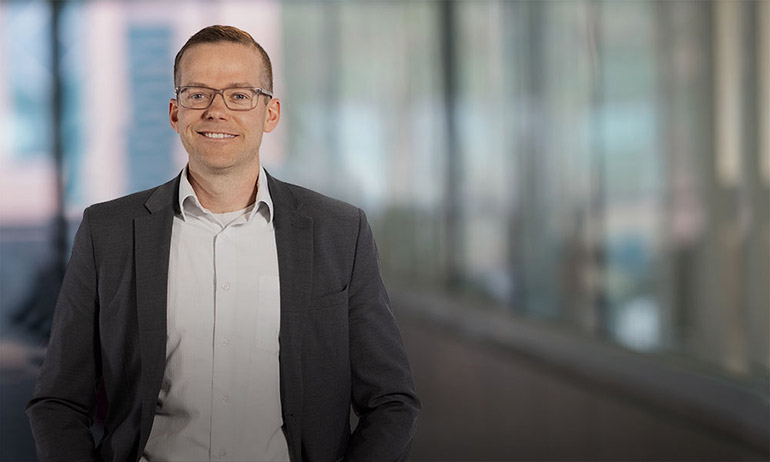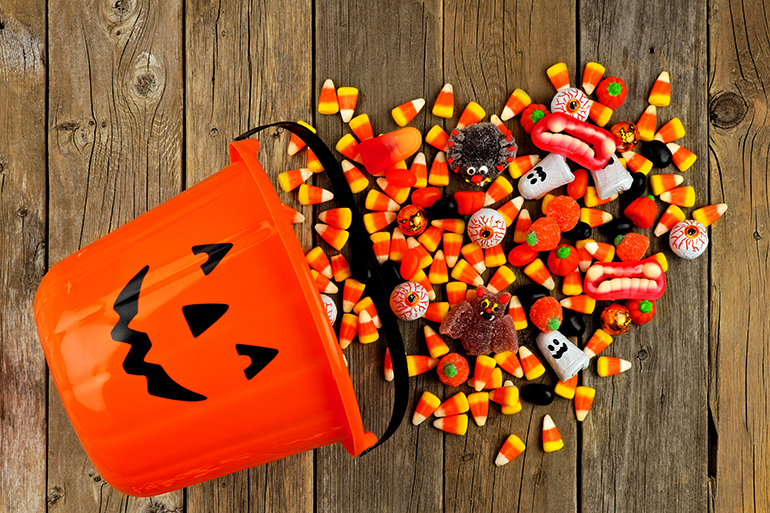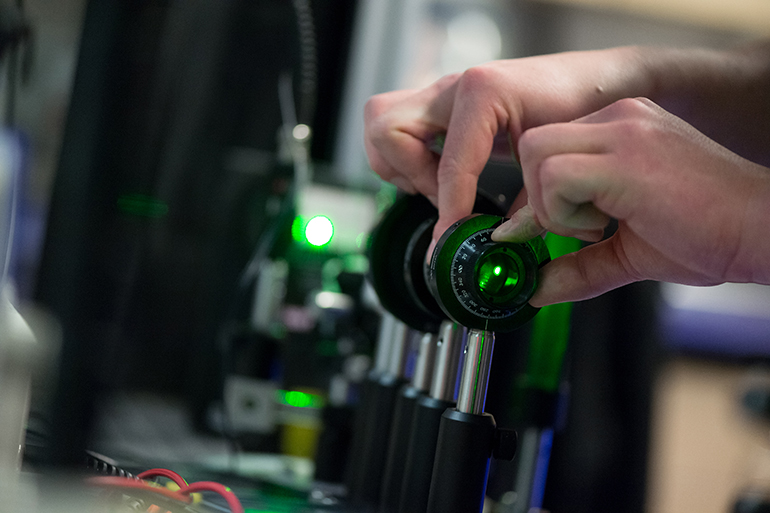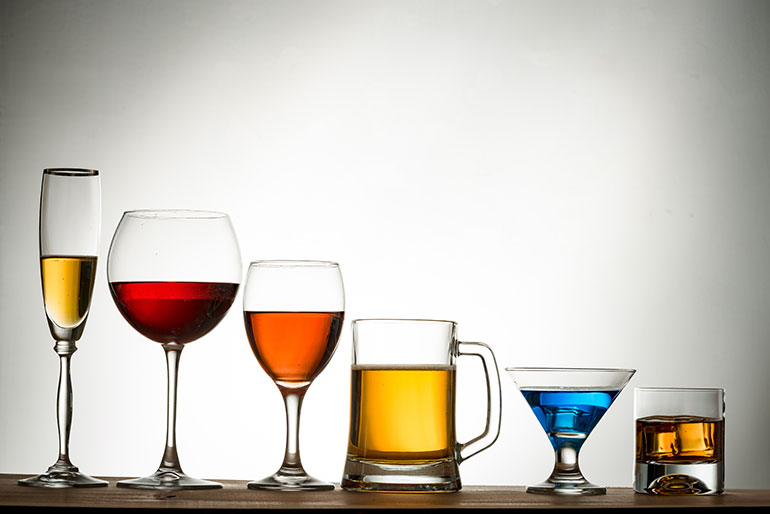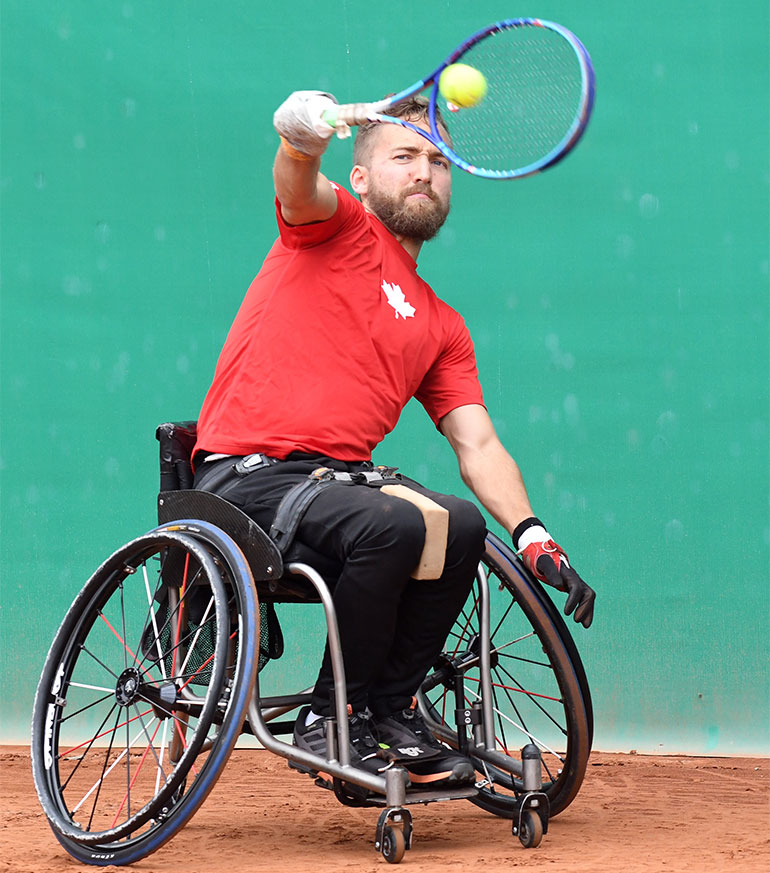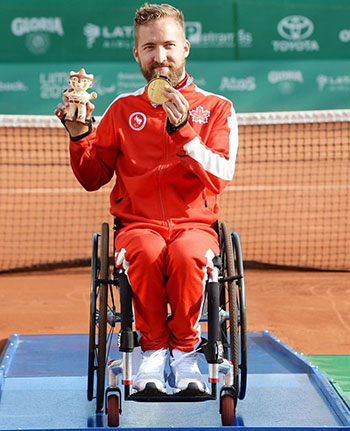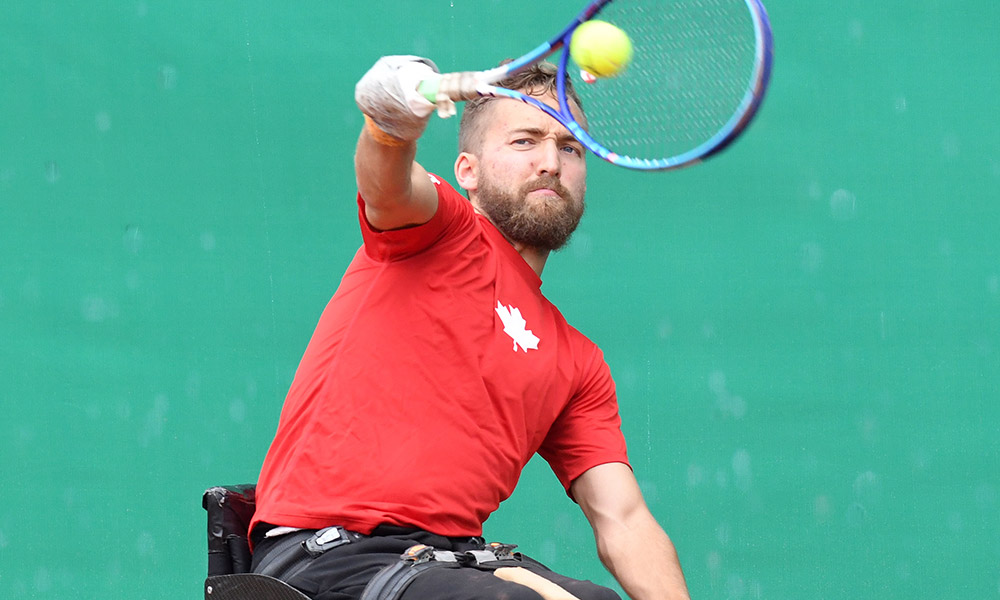
Dr. Rob Shaw will perform in the 2020 Summer Paralympics.
Just two months ago, Rob Shaw added a new title to his name by completing his Doctor of Philosophy in Interdisciplinary Studies at UBC Okanagan. In just a few weeks, the wheelchair tennis champion will add Paralympic athlete to his name as he competes in the 2020 Summer Paralympics in Tokyo.
Shaw came to UBC Okanagan in 2016 as a doctoral student in Dr. Kathleen Martin Ginis’ spinal cord injury research group. Their work focuses on improving the health and wellbeing of the 85,000 Canadians living with spinal cord injury. Shaw’s work involves investigating the impact of peer mentorship on people with spinal cord injury in hospital and community settings. During the last year, Shaw not only completed his education with the School of Health and Exercise Sciences, but also physically trained full time. Now that his academic life is momentarily on pause, he is focusing on training and competing for Canada in the singles wheelchair tennis event which starts August 27.
He shared a few insights before swinging into action.
What was training like during this pandemic year?
Obviously, COVID-19 made things a little more challenging than usual. Luckily, I’ve been able to train both in Kelowna and Vancouver to maximize my on-court time. However, because we weren’t able to train or compete with others, we haven’t been able to gauge our progression and so it’s hard to determine what level we’re at. We are doing our best with what little information we have.
What have your biggest challenges been during this journey?
I’m used to balancing my studies with training. However, this last year was intense and unusual because but I was working toward two huge milestones — honing my body and mind — at the same time. I worked eight hours a day on my doctoral thesis and then I switched gears to train for the Paralympics. Also, COVID-19 protocols made it difficult for both. My research involves working with people and moving to online platforms required patience. The lack of competitions also made playing tennis a challenge and maintaining peak physical conditioning without going to a gym was tough.
What are you most looking forward to in Tokyo?
I’ve worked hard to reach this goal. Currently, I’m ranked eighth in the world and I am the four-time national quad singles champion. Representing Canada in the Paralympics is an honour and a dream come true. It’s been almost two years since I’ve had a competitive tennis match and so I’m really looking forward to putting my training into match-play. I’m also looking forward to catching up with some of my friends in Tokyo.
What are your thoughts about Canada’s recent Olympic performance?
This was an absolutely tremendous Olympics for Canadian athletes and their support staff. It was amazing to see so many obtain personal bests knowing how difficult their training environments have been in the past two years. I expect to see similar results from Canadian Paralympic athletes as well.
To find out more about Shaw’s research, visit: ok.ubc.ca/okanagan-stories/game-changers

